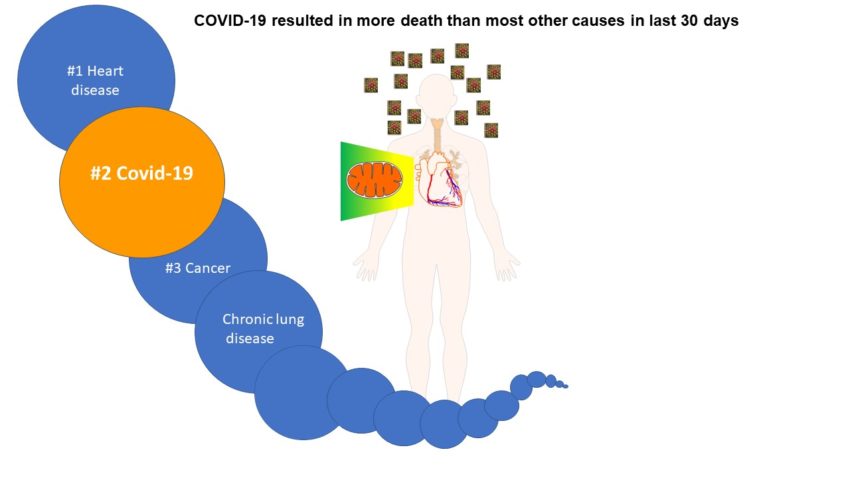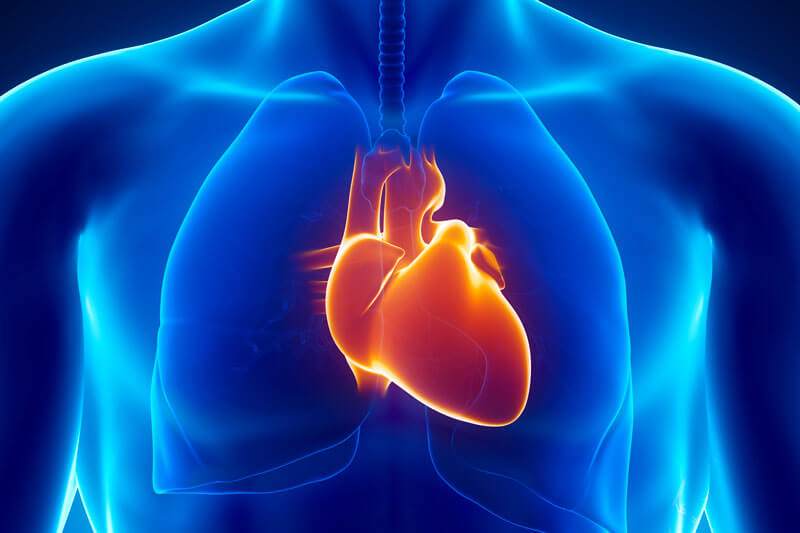To understand and prevent COVID-19-induced heart disease, researchers at UT Health San Antonio will follow recovered patients for the next 10-15 years, all the while studying basic mechanisms that underlie the cardiac damage now observed in one-fifth of COVID-19 patients.
Faculty in the university’s Long School of Medicine will test two molecular drugs in infected cells to determine whether the drugs can block the SARS-CoV-2 virus from replicating.
“We are using innovative tools such as super-resolution microscopes to visualize how the virus enters the heart’s muscle cells, which are called cardiomyocytes,” said project leader Madesh Muniswamy, Ph.D., professor in the Long School of Medicine. “We are particularly interested in the virus’ attack on structures called mitochondria.”
Mitochondria are cellular power plants that produce energy, enabling the heart muscle fibers to beat and pump blood. When SARS-CoV-2 enters the cardiomyocytes, it produces toxic substances that compromise the mitochondria, Dr. Muniswamy said. He believes the power production dwindles, killing cardiac muscle cells. Death of the cells then results in severe heart damage called cardiomyopathy and, ultimately, heart failure.
Marker of disease
“Scientists in China observed that a number of COVID-19 patients had cardiac involvement. These patients had elevations of a blood enzyme called troponin, which is unique to the heart, and in fact is a test that we use to diagnose heart attacks in people,” said Allen S. Anderson, M.D., professor and chairman of cardiology in the Long School of Medicine.
“The blood test is quite sensitive,” he said. “It picks up very small amounts of damage. As many as 20% of the Wuhan, China, patients had this involvement, even younger patients without as much underlying disease as older patients. The exact mechanism of the damage is unclear.
“Our studies will benefit because Dr. Muniswamy has an extremely good model system for studying cardiac function and injury, and he is an expert in studying the mitochondria, which are very important cell structures,” Dr. Anderson said.
Portal to the cell
SARS-CoV-2 invades cells mainly through a receptor called Angiotensin Converting Enzyme-2, or ACE-2. This receptor is primarily expressed in the heart and lungs. “The virus hijacks this particular receptor and enters the cardiomyocytes, where 10 of its proteins target the mitochondria,” Dr. Muniswamy said.
ACE-2 receptors are highly expressed in patients who have other complications such as hypertension, diabetes and obesity. This helps explain why they are prone to the SARS-CoV-2 infection when they encounter other people who are carriers, Dr. Muniswamy said.
The researchers will study how the mitochondria change under the extreme duress of COVID-19, the disease that results from SARS-CoV-2 infection. Will these microscopic power plants dwindle in number as expected? If they don’t die, will they become malformed? Will their activity diminish?
Replication
Why does the virus attack mitochondria? “As a virus enters a cell, it dismantles itself into fragments and then reassembles. That is called replication,” Dr. Muniswamy said. “Inside the host cell, the virus disrupts mitochondria because it needs the power they generate to reassemble its viral particles.”
The team will test its novel drugs in infected cardiomyocytes to see if the viral replication is disrupted. If they observe a successful result in heart muscle cells, they will test the drugs in cell types throughout the body.
The UT Health San Antonio team is obtaining human cardiomyocytes for the research from Dr. Muniswamy’s colleagues at the University of Pennsylvania. “We will work with these cells at Texas Biomedical Research Institute in San Antonio, where experiments can be performed on SARS-CoV-2 in high-end biocontainment laboratories,” Dr. Muniswamy said.
Potential of long-term complications
Dr. Anderson, a noted expert in heart failure, joined the Long School of Medicine in 2019 from Northwestern University. He will work with the clinical side of this research program. He said it is already shown that COVID-19 patients with heart involvement have a poorer prognosis – they don’t do as well.
“One of my concerns is that there are other viral infections that lead to longstanding heart muscle dysfunction,” Dr. Anderson said. “We don’t know enough about this virus to understand what the long-term implications are, but it’s something we are going to have to watch.”
Dr. Anderson said the studies conducted at UT Health San Antonio will give researchers insights into why 20% of patients experience cardiac involvement with COVID-19 and 80% do not.
The project, titled “Understanding and Prevention of COVID-19-Induced Cardiomyopathy,” is one of nine COVID-19 research initiatives funded by UT Health San Antonio, which allocated $450,000 to establish the COVID-19 Rapid Response Pilot Program.

# # #
The Long School of Medicine at The University of Texas Health Science Center at San Antonio is named for Texas philanthropists Joe R. and Teresa Lozano Long. The school is the largest educator of physicians in South Texas, many of whom remain in San Antonio and the region to practice medicine. The school teaches more than 900 students and trains 800 residents each year. As a beacon of multicultural sensitivity, the school annually exceeds the national medical school average of Hispanic students enrolled. The school’s clinical practice is the largest multidisciplinary medical group in South Texas with 850 physicians in more than 100 specialties. The school has a highly productive research enterprise where world leaders in Alzheimer’s disease, diabetes, cancer, aging, heart disease, kidney disease and many other fields are translating molecular discoveries into new therapies. The Long School of Medicine is home to a National Cancer Institute-designated cancer center known for prolific clinical trials and drug development programs, as well as a world-renowned center for aging and related diseases.
The University of Texas Health Science Center at San Antonio, also referred to as UT Health San Antonio, is one of the country’s leading health sciences universities and is designated as a Hispanic-Serving Institution by the U.S. Department of Education. With missions of teaching, research, patient care and community engagement, its schools of medicine, nursing, dentistry, health professions and graduate biomedical sciences have graduated more than 37,000 alumni who are leading change, advancing their fields, and renewing hope for patients and their families throughout South Texas and the world. To learn about the many ways “We make lives better®,” visit www.uthscsa.edu.
Stay connected with The University of Texas Health Science Center at San Antonio on Facebook, Twitter, LinkedIn, Instagram and YouTube.


